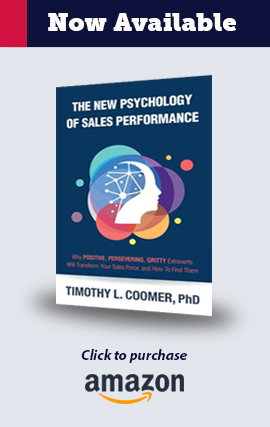That was not the answer I expected, but it led me on a journey to understand the factors that contribute to sales performance. In fact, I entered an executive leadership program at Oklahoma State University so that I could examine this topic at the Ph.D. level. I approached this endeavor in the same way that I have approached all my high-level analytical work—seeking to do quality research and distill the results down to the practical level to benefit the sales profession and individuals seeking personal growth.
My findings have compelling, easy-to-apply implications for the all-important task of cultivating a productive sales force in any B2B setting. In the short 50-page book you see linked in the sidebar, I explain what I have learned and how you can put this information to work. I have tried to keep things short and simple. I think you will find the book an easy but fascinating read.
Also, the resulting personality model, called MyPersonality®, is now available in two forms. One form is available free to brokerage firms and agencies that would like to use the assessment as part of their hiring process. The book explains how to sign up and access this resource. Second, a version designed to support personal growth and goal setting is also available and free. This too is explained in the book.
The book goes into detail concerning the HEXACO personality model, Psychological Capital, and Grit. Both forms of the MyPersonality® assessment provide a complete personality profile with detailed sub-trait analysis. But more importantly, this information is used to predict how the assessment taker will perform in a variety of situations.
If you are looking for a new effective tool for personal growth or for hiring successful salespeople, please consider purchasing The New Psychology of Sales Performance.
We welcome your feedback by posting a comment or contacting us at support@SIGMAactuary.com.
© SIGMA Actuarial Consulting Group, Inc.

